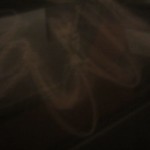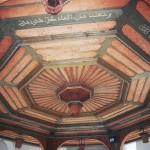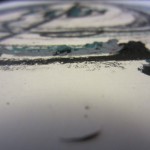Dr. Ali Asani’s course, Culture & Belief 12: Fort the Love of God and His Prophet, provided an insight introduction into the many, albeit sometimes misunderstood, meanings of Islam—culturally, politically, and theologically speaking. Particularly with the growing interconnectedness of people and cultures in the world, it is critical, for Muslims and non-Muslims alike, to view and understand the many merits of Islam as a religion as exactly such—an amalgam of different beliefs, perspectives, and experiences. While sometimes these perceptions become conflicted, it is the process by which Islam is personally understood that gives meaning to its ideology, which, above all else, connects its followers through the unifying thread of belief in a single God.
Critical to this, as Professor Asani points out in his book, Infidel of Love: Exploring Muslim Understanings of Islam, is a religious and cultural literacy that is “important for humanity and how people understand each other” (Asani, 4). A person’s description of Islam, “whether he or she is Muslim or not, is based on what he or she has subjectively experienced, perceived, read or been taught” (Asani, 6). As such, it is critical to consider religion as being necessarily contextualized in a human history which is constantly changing (Smith, 16). Religion is thereby never fixed—instead, “it is unstable, dynamic and always changing and evolving, strongly influenced by and influencing the milieu in which it is situated” (Smith, 10). Thus, while some consider religious tradition to be “divinely inspired,” Smith writes that it is rather: “a part of this world; it is the product of human activity; it is diverse, it is fluid, it grows, it changes, it accumulates. It crystallizes in material form the faith of previous generations, and it sets the context for the faith of each new generation as these come along” (Smith, 12).
With this understanding, religion becomes open to the various human contexts in which it is situated, observed, and practiced. Asani writes that such a contextualized approach to understanding Islam emphasizes its multiplicities:
Religion is a phenomenon that is embedded in every dimension of human experience. Its study, therefore, requires multiple lenses through which to understand its multivalent social/cultural influences. This approach challenges the assumption that human experience can be studied accurately through discrete disciplinary lenses (e.g. political, economic, cultural, social, etc.) and instead posits an approach that recognizes how these lenses are fundamentally entwined (Asani, 15).
As such, any study of religion, and Islam in particular, should recognize the variety of interpretations and practices with which it is associated and that “many Muslims, most of whose understandings of their religion are restricted to their specific devotional and sectarian contexts (Sunni, Shii, etc.), are astonished when they become aware of this diversity” (Asani, 18).
The six creative projects I have completed for this course rely on precisely such an understanding of Islam—a religion that is comprehended and experienced in many ways. Just as numerous religious movements and divisions exist, from the most liberal to the most conservative, so do personal perceptions of the role of religion in one’s life. Islam, as such, grants a certain autonomy to the individual to interpret and devote himself in a distinctive form—to understand Islam within one’s own artistic medium. While this should certainty establish a sense of ambiguity on the “meaning of Islam,” it is precisely this which makes Islam a beautiful religion. It is, above all, a certain unity that transcends any such opacity, a belief that that God is One, that there is only One God, and that he glorifies life.
Throughout the course, we have learned about various artistic mediums through which Islam, and beliefs in and experiences of its ideology, may be expressed. Through the use of literature, music, movies, architecture, calligraphy, and dance, Islam is experienced and understood uniquely by its observers. Within my projects, I utilize different elements of the course and the artistic mediums discussed in order to represent my own understanding of Islam’s diverse beauty. While each creative response features a distinct form of art, and a different layer of religious meaning, the harmony of these experiences combined is the central principal of my project—it is the coalesced belief in Allah, the Beneficent, the Merciful, that unites the belief in Islam across every kind of border.
In the first project, Recitation of Surah Al-Fatiha, I perform the first chapter and one of the most recited verses of the Qur’an. The seven verses, | In the name of Allah, the Most Beneficent, the Most Merciful | Praise be to Allah, Lord of the Worlds | The Most Beneficent, the Most Merciful | Owner of the Day of Judgement | Thee (alone) we worship; Thee (alone) was ask for help | Show us the straight path | The path of those whom Thou hast favoured; Not (the path) of those who earn Thine anger nor of those who go astray |, are a prayer for Allah’s guidance and have a critical role in the Salaat, or daily prayer. Typically, Muslims recite the Surah AL-Fatiha seventeen times a day, at the beginning of each prayer. As Islam and teachings of the Qur’an historically began as an oral tradition, the sacredness of Qur’anic recitation is one that has remained symbolic throughout the Islamic world.
An important form of dhikir, or remembrance of God, experiencing recitation allows Muslims to achieve a higher level of spiritual connection with God. The 40th Hadith reads: “Recite the Quran as long as your hearts are united with it, and when you differ then arise from it’ is a command to this reciting, for it calls for reciting as long as the heart is accepting and the mind alert, and the soul responsive, and if not, postponement is best” (Renard, 26). Within my recitation of the Surah Al-Fatiha, I employ one of two primary styles of recitation—Mujawwad. Mujawwad incorporates dramatic silences and the elaboration of certain syllables and/or vowels (maad). Specifically, I employ maqam—which is the Arabic term associated with different “moods” of recitation. Throughout, I use techniques of huzn, or sadness, in my voice to show the longing for God that is experienced through recitation.
In the second project, entitled The Light of Muhammad, I was inspired by several of Professor Asani’s discussions as well as readings on the prophet Muhammad throughout the course—particularly those in Week 4, including Marie-Rose Seguy’s “The Miraculous Journey of Mahomet” and Zeren Tanindi and Siyer-i Nebi’s “An Illustrated Life Cycle of the Life of Muhammad and its Place in Islamic Art.” Through this project, I seek to illustrate the figurative role of Muhammad for Islam’s follower—one that is considered a light, or noor, for the Islamic community. Yet as there are many interpretations of the precise meaning of this phrase—for example, some claim that the Prophet is the light, while others claim that “By Light He means Muhammad (Allah bless him and give him peace), through whom Allah has illuminated the truth, manifested Islam, and obliterated polytheism; since he is a light for whoever seeks illumination from him, which makes plain the truth” (Jami’ al-bayan, 6.161)—Muhammad is a guiding force for most Muslims in the world, and the feature which most saliently separates Islam from other religions.
To create this sense of guidance, or light, that Muhammad emanates, I used a collection of tea candle lights with which I spelled out his name in Arabic. I was careful to do so, however, in a rather abstract fashion—to represent the sometimes ambiguous, infinite ways in which we understand Muhammad and his role in the teachings of everyday Muslim life. To emphasize the role of Muhammad as a personal leader for the spiritual and the various meanings he represents, I took photographs of the candle arrangement from diverse angles. This allows us to remember Muhammad as a core part of the Islamic faith, yet one which we can understand individually depending on the particular ‘angle’ of Islam that we take. Lit, the flame of the candles is a reminder of the powerful and eternal light of Muhammad.
In the third project, Wooden Block Calligraphy, I focus on the importance of Arabic, or Islamic, calligraphy. The post itself, and the photographs attached, concerns the wood-inscription of the Qur’anic phrase: Bismillah al rahman al Rahim. In translation, the final product reads: “In the name of God, most Beneficent, most Merciful.” Critically, the phrase itself is considered to be representative of one of the major pillars of Islam—which pronounces belief in the one God, Allah. Within the Qur’an, every chapter except for the ninth begins with this exact phrase, totaling 114 times in appearance—and serves as a reminder to its readers of the importance and will of Allah. As such, most Muslims will often say this phrase before embarking on daily routines such as eating, or significant events in their lives. As Yasin Jibouri explains, the merits of reciting this phrase include the protection of a person from hell (interestingly, the verse is comprised of nineteen letters, “the same number as the number of the keepers of the gates of hell”) and the help of Allah in completing any work or task.
The making of this particular wooden block (which I completed in Sarajevo during the summer of 2011) is representative of the importance not only of the recitation of this phrase, but of the need to be constantly reminded of it by holstering the block inside of the household. Throughout this course, we have been taught the many differences between different sects of Islam and the diverging interpretations that have come of the Qur’an. Yet this simple phrase, Bismillah al rahman al Rahim, remains one of the most critical and meaningful for all Muslims of the world, and is in a way the ideological tie that binds all Muslims together.
In the fourth project, Islamic Architecture: The Gazi Husrev-beg Mosque, I draw on the debate on Islamic art, and particularly the readings by M. Frishmann and H. Khan, The Mosque, and M. Sells, “Erasing Culture: Wahhabism, Buddhism, Balkan Mosques.” Following the reading of these articles and Professor Asani’s lectures this week, I was reminded of a very particular mosque in Southeastern Europe—Begova Djamija (formally known as the Gazi Husrev-beg Mosque) in Sarajevo, Bosnia and Herzegovina. Begova Djamija is often considered to be the most important Islamic structure in the country, and is the largest and most visited Islamic building in the Balkans. However, as Michael Sells notes, it’s pre- and post- war construction have often times been debated.
Built by the Ottomans in 1531, Begova Djamija encompasses beautiful ornamentation and over 50 large windows that produce a great sense of light and space. The main architect and financier of the mosque, Gazi Husrev-beg, wrote in his memoirs: “I built the mosques, the bridges, the inns for travellers, and my vakuf is the finest that will ever be known. They will say, in the time to come, that Gazi Husref-beg turned Sarajevo village into Sarajevo town.” During the Bosnian War of 1992-1995, however, Begova Djamija had become a target for Serb artillery and shelling. As a result, it was heavily damaged and much of the exterior of the almost 500-year old mosque was destroyed. In 1996, however, it was renovated with foreign help—particularly from the Syrians and Saudi Arabs. Prominently, Sells has criticized the renovations as being too influenced by Wahhabism. For example, before the reconstruction, most of the interior of the mosque was very intricate—with many complex colors and design schemes. With the new renovations, however, most of the walls are purely white, and much of the detail and color have been taken out.
As the debate over these changes continues, however, and Bosnia engages in a type of re-birth of Islam, it will remain critical that Bosnia, and Bosnians, retain and build their own “Islamic identity.” Through 2010, most of the financiers and architects of Bosnia’s Islamic buildings have been foreign—and while the financial help and architectural inspiration of other Islamic cultures are of course important components of any architectural design, Bosnia’s post-war period should be seen as a time for Bosnian Muslims to recreate a post-war history of their own. Ultimately, the beautiful architecture of Begova Djamija reminds us of the mosque as being a sacred space for its believers—one whose walls and ornaments hold a great deal of meaning.
In the fifth project, Reflections in Water, I focus on a Sufi understanding of Islam discussed in the Week 10 reading of Attar’s Conference of the Birds. A mathnawi, or epic poem, Conference of the Birds describes the mystical journey of thirty birds on a quest to discover truth. A wonderful recount of Sufi tradition and lessons of patience and self-discovery, the poem concludes with the birds’ finding “truth” in their own reflection in a lake.
In my response, I attempt to recreate the Sufi idea that God is not external or separate from the universe—“a totality of existence.” As such, God is intrinsic to his believers and indefinitely tied to our inner egos. As Attar says to the birds, in order to truly experience Islam, one must abandon self and the establishment of religion. It is these conceptions that prohibit one from reaching the batin and genuinely experiencing Islam. Attar explains to the birds that before reaching the truth, one thinks of God as being veiled and intangible. However, after the journey of truth—symbolically undertaken by the birds in this story—we are able to feel a connection with God that draws on a higher plane of reality, or haqiqa. Reaching this state of enlightenment, we become aware not only of God’s existence as internal to us, but can experience him as one with us.
I focus on this more controversial aspects of Attar’s poem—when the birds look into a lake to find only a reflection of themselves (and not the mystical Simorgh). I chose to focus on this concept in my creative response particularly because of the many meanings it can hold for readers of this poem. I used a flat, black bowl in which I spelled out “Allah” in Arabic using water. I then used a solid, white clay coloring pencil to repeat the same inscription beneath water that I poured into the bowl. The color pattern used—black, white and translucent—is meant to represent the distinct ways in which we understand God (as within us, as external or internal to us, and as unified with us). In the fourth picture shown, I photograph myself as a reflection in the pool. Through the collage of pictures shown, I let the water dissipate for several hours, until the writing became blurred. While slightly blurred, the word also becomes more prominent on the black surface as time passed—this is indicative of the type of journey undertaken in Attar’s poem and the “truth” of Allah we find with such enlightenment.
Finally, for the sixth project, Tahwid: God is One, I incorporate what I view to be the unifying force of my projects herein displayed—the Dairah, or circle, of Islam. Throughout the semester, we have learned about the symbolic nature of circular concepts in Islam—that everything in existence is made of circles, including the sun, moon, stars and our lives. As such, we are reminded that we both come from Allah and will ultimately return to Allah.
This simple concept, that everything in life somehow repeats and becomes circular, becomes critical to understanding Islam in the different contexts herein described. In my response, I use a variety of clay-made colors to inscribe Bismillahi in a circular fashion. I use grays, browns, blacks, and greens to convey the way in which nature is tied to Islam, smearing of the colors to represent the ultimate unity that Islam gives to its followers. I give dimension to the words, as displayed in the second line of photographs, in order to illustrate the varying multiplicities through which we understand Islam as a religion, and the personal perspective through which we may become enlightened. Finally, the word Allah is most prominently inscribed in the middle of the circle, with the Alif running through both the middle of the word and the dairah itself. This is meant to represent the notion that it is Allah, despite various conceptions and understandings of Islam, who is the guiding force that unites all Muslims in their belief.
Thus, whether Sufi, secular, conservative or other, Islam as a tradition and as a religion ultimately unifies its believers with the simple notion that Allah is One and it is he, through his creation and existence, who gives meaning to humanity. However we may understand religion and the many perspectives and expressive mediums from which we can draw, the ultimate goal is similar for believers—a true understanding of God. This “truth,” as I attempt to illustrate through my creative responses, is a personal understanding—a journey each individual believer must undergo in order to reach his or her own enlightenment.





































